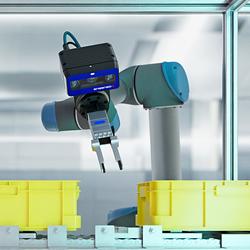The Future is Two-Stroke: Hirth Engines Look to the Future of Hybrid UAVs
Hirth sets out its future vision for unmanned aerial vehicles (UAVs) highlighting superior power-to-weight ratio as the key to extended range and fuel economy.
At this year's AUVSI XPONENTIAL, global two-stroke pioneers Hirth Engines will demonstrate its future innovation programme and showcase the latest lightweight propulsion system technologies including the renowned 41, 42 and 35 series.
The need for endurance, reduced footprints, lightweight platforms, cost-effectiveness and safer operations are at the forefront of customers' minds when looking for solutions across a wide spectrum of UAV applications. These needs are best met by highly efficient and effective two-stroke propulsion systems.
Hirth Engines is now looking toward hybrid applications to harness the power of both an internal combustion engine and electrical motors to deliver solutions for the future.
"This is only the beginning and confirms that two-stroke provides a unique role in the future of UAV applications," explains Peter Lietz, Head of International Business Development for Hirth Engines. "The performance, durability and ease of maintenance for two-stroke engines is unbeatable and provides an ideal platform for the future of aviation, manned or unmanned. We are very excited to be exploring deliverable solutions for the future of UAVs".
Leveraging Hirth's heritage in two-stroke technology and utilising existing invention protections registered by the company, the development engineering team has committed to a journey of designing an engine that will achieve a hybrid future. The experts at Hirth recognise that the two-stroke engine is the perfect partner for electrical power units; low power to weight ratios enable higher payload capacity whilst lower torque and the absence of voltage peaks reduce energy requirements.
This research will deliver a whole new generation of applications across maritime, land and civilian sectors. UAVs, and in particular VTOL (Vertical Take-Off and Landing) platforms, will move to the next level of their development. Hybrid applications will bring significant benefits to UAV manufacturers, including extended ranges and longer endurance levels, lower emissions and increased fuel efficiencies.
Lietz continues: "The key partnership between advanced two stroke propulsion systems and electric power offers significantly better power-to-weight ratio and improvements in safety levels. Thanks to the use of a hybrid engine application, VTOL platforms in the future will be able to fulfil a wider variety of tasks in comparison to their fixed-wing counterparts."
For further information about Hirth's portfolio of engines, visit http://hirthengines.com/.
Featured Product

3D Vision: Ensenso B now also available as a mono version!
This compact 3D camera series combines a very short working distance, a large field of view and a high depth of field - perfect for bin picking applications. With its ability to capture multiple objects over a large area, it can help robots empty containers more efficiently. Now available from IDS Imaging Development Systems. In the color version of the Ensenso B, the stereo system is equipped with two RGB image sensors. This saves additional sensors and reduces installation space and hardware costs. Now, you can also choose your model to be equipped with two 5 MP mono sensors, achieving impressively high spatial precision. With enhanced sharpness and accuracy, you can tackle applications where absolute precision is essential. The great strength of the Ensenso B lies in the very precise detection of objects at close range. It offers a wide field of view and an impressively high depth of field. This means that the area in which an object is in focus is unusually large. At a distance of 30 centimetres between the camera and the object, the Z-accuracy is approx. 0.1 millimetres. The maximum working distance is 2 meters. This 3D camera series complies with protection class IP65/67 and is ideal for use in industrial environments.
